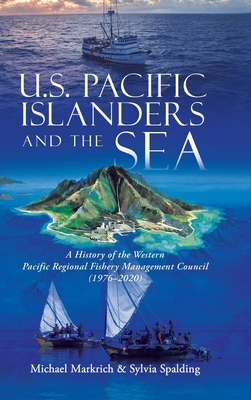
U.S. Pacific Islanders and the Sea: A History of the Western Pacific Regional Fishery Management Council (1976-2020)
Description
In 1976, the United States claimed waters out to 200 nautical miles from its shores as its fishery conservation zone (now known as the
exclusive economic zone, or EEZ). This action by the U.S. Congress aimed to develop and protect the nation's domestic fisheries by banning foreign fishing in waters adjacent to the United States without a fishing agreement, except to target tunas.
Ironically, tunas were and continue to be culturally, socially and economically important species in the U.S. Pacific Islands, which account for half of the nation's EEZ waters. Getting tunas recognized as "fish" in the Fishery Conservation and Management Act (known today as the Magnuson-Stevens Act, or MSA) was one of many ground-breaking achievements of the Western Pacific Regional Fishery Management Council. The 1990 amendment to the MSA allowed the Council to address not only foreign tuna fleets that were incidentally catching billfish but also to defuse heated conflicts between the local small-boat fishing fleet and larger domestic longline vessels from the East Coast and the Gulf of Mexico that arrived in Hawai'i in a gold rush to target tunas and newly discovered swordfish grounds.
Composed of representatives from the State of Hawai'i, Territories of American Samoa and Guam, the Commonwealth of the Northern Mariana Islands and four federal agencies, the Western Pacific Council became one of the most innovative fishery management organizations nationally and internationally. Firmly rooted in their cultural traditions that viewed the ocean as a source of nourishment and stewardship as a responsibility, the Council members from the islands called for a precautionary approach at a time when the National Marine Fisheries Service pushed for optimum yield. The Council pioneered the ban on potentially destructive fishing gear, the creation of large marine-protected areas and the use of limited-entry programs, satellite-based vessel monitoring systems and circle hooks as a protected species mitigation measure. Equally significant, the Council supported the fishing rights and knowledge of the indigenous Hawaiian, American Samoan, Chamorro and Refaluwasch-who had thrived for millennia on the small remote islands prior to Western conquest.
True to the intent and provisions of the MSA, the Council developed and supported sustainable domestic fisheries in the EEZ in the U.S. Pacific Islands despite being challenged by the lack of scientific knowledge about the fishery resources and their ecosystems. Paradoxically, despite its many conservation achievements and fulfillment of its MSA duties, the Council would be second-guessed by some U.S. mainland big-game sportfishing and conservation groups, with the support of influential, well-funded foundations intent on restricting fishing in more than half of the U.S. EEZ in the Pacific Islands.
The history of the first 44 years of the Western Pacific Regional Fishery Management Council provides insights into the challenges and accomplishments of the U.S. Pacific Islanders to maintain their fishing heritage and benefit from the marine resources in the waters that surround them through the public-participatory decision-making process of the Magnuson-Stevens Act.
